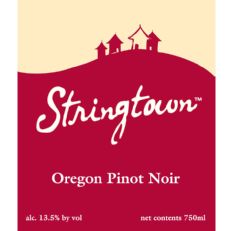Sign In Chef

By using our free meal planner (and the rest of spoonacular.com) you have to agree that you and only you are responsible for anything that happens to you because of something you have read on this site or have bought/cooked/eaten because of this site. After all, the only person who controls what you put in your mouth is you, right?
Spoonacular is a recipe search engine that sources recipes from across the web. We do our best to find recipes suitable for many diets — whether vegetarian, vegan, gluten free, dairy free, etc. — but we cannot guarantee that a recipe's ingredients are safe for your diet. Always read ingredient lists from the original source (follow the link from the "Instructions" field) in case an ingredient has been incorrectly extracted from the original source or has been labeled incorrectly in any way. Moreover, it is important that you always read the labels on every product you buy to see if the product could cause an allergic reaction or if it conflicts with your personal or religious beliefs. If you are still not sure after reading the label, contact the manufacturer.
We also attempt to estimate the cost and calculate the nutritional information for the recipes found on our site. Again, we cannot guarantee the accuracy of this information. Additionally, our nutrition visualizer that suggests that you limit sodium, sugar, etc., and get enough protein, vitamins, and minerals is not intended as medical advice. Similarly, our health tips are based on articles we have read from various sources across the web, and are not based on any medical training. The team behind spoonacular does not possess any medical qualifications and the information may be found to be incorrect or out of date based on future research. If you need help planning your diet or determining which foods (and recipes) are safe for you, contact a registered dietitian, allergist, or another medical professional.
Spoonacular is not responsible for any adverse effects or damages that occur because of your use of the website or any information it provides (e.g. after cooking/consuming a recipe on spoonacular.com or on any of the sites we link to, after reading information from articles or shared via social media, etc.)
×$2.70 per serving

2 likes

Ready in 45 minutes

Spoonacular Score: 49%
Seared Scallops With Wilted Greens is a main course that serves 4. One portion of this dish contains around 19g of protein, 18g of fat, and a total of 271 calories. For $2.7 per serving, this recipe covers 15% of your daily requirements of vitamins and minerals. A mixture of butter, soy sauce, sea scallops, and a handful of other ingredients are all it takes to make this recipe so scrumptious. This recipe from Foodista has 2 fans. It is a good option if you're following a gluten free diet. From preparation to the plate, this recipe takes around 45 minutes. All things considered, we decided this recipe deserves a spoonacular score of 58%. This score is pretty good. Seared Scallops With Wilted Greens, Seared Scallops with Wilted Greens, and Seared Scallops With Wilted Greens are very similar to this recipe.
Scallops on the menu? Try pairing with Pinot Noir, Chardonnay, and Chenin Blanc. Chardonnay and chenin blanc are great matches for grilled or seared scallops. If your scallops are being matched with bacon or other cured meats, try a lightly chilled pinot noir. The Stringtown Pinot Noir with a 4.8 out of 5 star rating seems like a good match. It costs about 17 dollars per bottle.
 With expressive cherry and red berry fruit on the nose and a soft, supple palate, rounded off by sweet, spicy and complex oak notes, this fruit-driven Pinot Noir features just the right balance of acidity and delicate tannins to finish clean yet vibrant.
With expressive cherry and red berry fruit on the nose and a soft, supple palate, rounded off by sweet, spicy and complex oak notes, this fruit-driven Pinot Noir features just the right balance of acidity and delicate tannins to finish clean yet vibrant.
» Get this wine on Wine.com






















Read the detailed instructions on Foodista.com – The Cooking Encyclopedia Everyone Can Edit